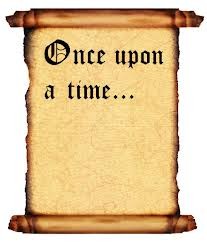Remember when you were a child, watching Disney classics like the Fox and the Hound, Toy Story, or Beauty and Beast? You were soaked into their story, a passenger on their adventures, and utterly absorbed their message. Storytelling is a powerful tool to inspire, motivate, or even influence people into action. Why? Because you feel safe and are open to listen and hear everything that is presented. But most importantly, you are involved. That is why you remember the details of the inviting hand or the nature of friendship. Or as Riley Gibson on Inc strikingly wrote:
1) Stories are memorable
2) Stories travel further
3) Stories inspire action
The success of a blog like Pixar’s 22 rules of storytelling is an example of how we want to get a better grasp on this creative tool. Not only for writing a film script or novel, but even more for presenting. TED became world famous by embracing the storytelling technique to spread ideas. Earlier we touched upon their format. But better even than reading, is listening. Have a look at their storytelling masters and decide for yourself what works for you.
So if you want to communicate your project, your idea, or you need to prepare your next presentation, do it through storytelling. Building your story is like working on your vision or your dream. You introduce the listener to the future as you see it and, if successful, the listener wants to participate in helping you build the culture that will achieve your goals. Storytelling is used by everyone and mastering the art can be beneficial in many aspects of professional and personal development. Roche et al. (2004) describes how storytelling is essential to leadership: ‘The effective leader will be the one who succeeds in creating the relationship between the product, the human being, and a larger purpose, thus succeeding in uniting his company and his employees behind a shared vision – even a dream.’ They go on to explain that storytelling can have this impact because people think in a narrative way, rather than argumentatively or pragmatically.
Let’s get back to our Disney characters. Here are 5 tips from your favorite childhood movies on great storytelling techniques:
- Keep it simple. Use easy words close to your senses. Feel, See. Stimulate their emotions. Cry, Love. Make use of concrete examples and metaphors, rather than dictionary definitions.
- Play on the difference between “the good and the evil”. For example, Steve Jobs loved to picture his products in a Star Wars story. Want to know more, there is a book out there on Steve Jobs storytelling capacities.
- Make a personal ‘story-line’. It is the story of Snow-white, Cinderella or Brave. You must be able to live the story. Make use of a personal anecdote to stress that this topic is so important.
- Don’t forget the hero role; Pixar’s number one rule: ‘You admire a character for trying more than for their successes.’
- Have fun while telling your story. People will see the passion and enthusiasm you have for your topic and they will remember that.
And good news for the startups. The dissertation “Does it matter how you tell it? On how Entrepreneurial Storytelling Affects the Opportunity Evaluations of Early-Stage investors,” from Jaume Villanueva says the following: ‘The findings of the experiment suggest that entrepreneurial storytelling does affect investors’ evaluative judgment.’ Click here to read the dissertation and read on how early-stage investors evaluate opportunities to make investment decisions and resource acquisition strategies of entrepreneurs.
Source:
Loïck Roche et al. 2004, Stories and Storytelling: An Example of Best Practice of Leadership in a High-Tech Environment, business leadership review.







Leave a Reply